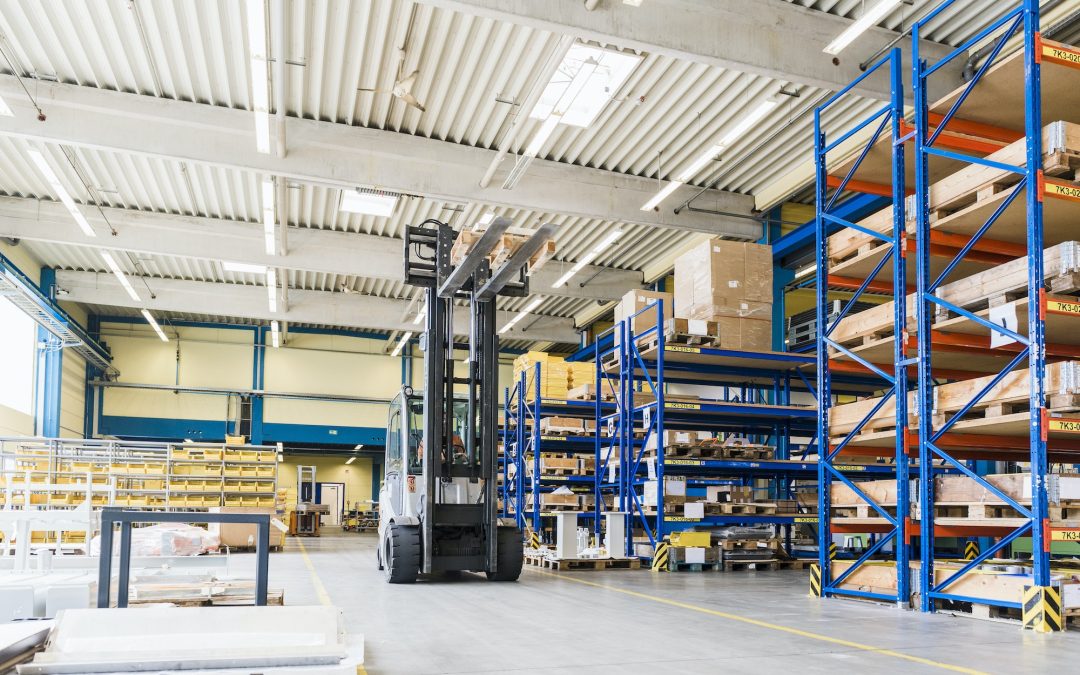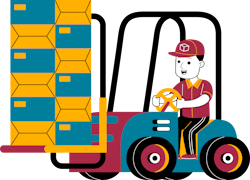Forklifts are essential pieces of equipment for many industries, from construction to agriculture. They can help with the transportation of goods and materials, making work much easier and faster. However, with all heavy machinery, it is important to be aware of the risks associated with them and take all necessary precautions to ensure that they are used safely.
In this blog post, we will discuss the best practices for loading and unloading forklifts safely, including the proper loading technique, safety equipment required, and other tips to keep in mind. By following these recommendations, you can help reduce the risk of injury or accidents while using a forklift.
Proper Loading Technique
When loading or unloading a forklift, it is important to use the correct technique. Start by ensuring that the load on the forks is evenly balanced and properly secured. This can be done by using a ratchet strap or similar device to secure the load in place before attempting to lift it. Make sure that all straps are tight and that there are no loose items that could potentially fall off while the forklift is in motion.
Next, adjust the forks so that they are as close as possible to the center of gravity of the load being lifted. If possible, have an assistant help guide you as you adjust the forks for better accuracy. Finally, always make sure that you have adequate clearance when lifting and carrying your load.
Safety Equipment
In order to use a forklift safely, it is important to wear all necessary safety equipment. This includes a hard hat, safety glasses or goggles, steel toe boots or shoes with non-slip soles, gloves for protection against sharp edges on materials being handled, hearing protection if needed (e.g., if operating in a noisy environment), and any other safety equipment applicable to your particular workplace.
It is also important to make sure that you are familiar with your specific forklift’s controls and understand how they work before operating it. Knowing how to properly operate a forklift can help reduce the risk of accidents while using one.
Additional Tips
- Always make sure that you have good visibility when driving or operating a forklift.
- Be aware of your surroundings at all times – know where people and other equipment may be located around you.
- If your load is too heavy or awkward for one person to handle alone, enlist help from another person.
- Never overload your forklift – know its weight capacity before attempting any lift.
- Always adhere to any height restrictions for your particular machine when lifting loads.
- Check all nuts and bolts prior to use on your machine – if anything appears loose, do not attempt a lift until repaired.
>
Maintenance
<
It is essential that regular maintenance is conducted on both the forklift itself and its forks. Regularly inspect all parts of your machine for signs of wear and tear – if detected repair or replace any damaged components immediately before use. Additionally, check that all bolts are properly tightened so as not to loosen while in motion.
>
Contact us, here at H&C Innovations Inc., should you require assistance inspecting or repairing any parts on your machine.
>
Conclusion
>
Loading and unloading forklifts safely requires knowledge of proper loading techniques as well as adherence to safety regulations. It is essential that those operating these machines understand how to properly use them in order to reduce the risk of injury or accidents occurring during operation. By following best practices such as wearing appropriate safety gear, ensuring proper balance when loading material onto forks, regularly inspecting parts for wear and tear prior to use, and adhering to height restrictions when lifting loads – operators can help reduce their risk even further.
>


